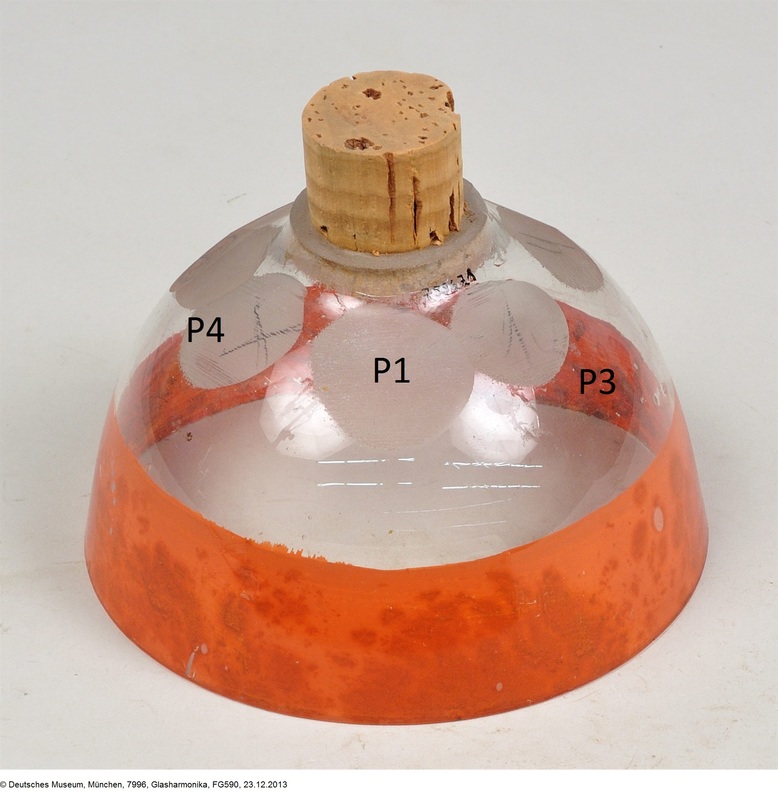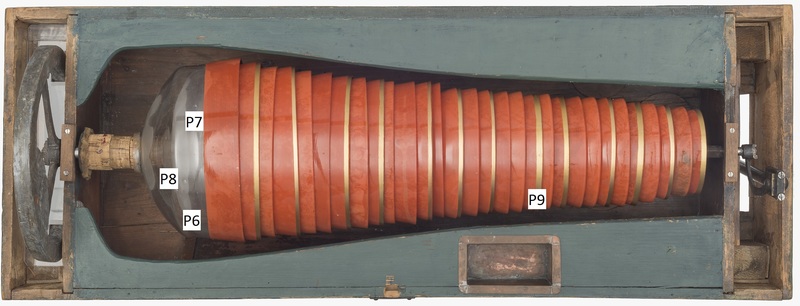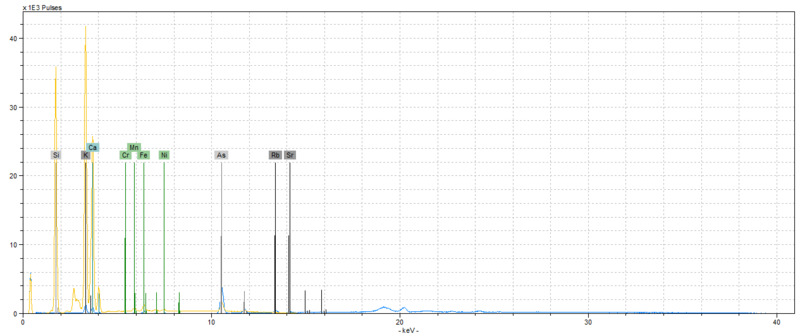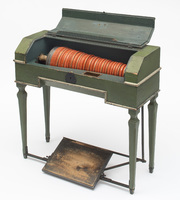Glass harmonica
Germany ca. 1800, Inv. No. 7996
Tests involving UV light fluorescence were performed on the small glass bowl from the harmonica (Inv. No. 7996), that is preserved separately from the instrument and stable enough for handling. The colorless, transparent glass showed a distinct yellow fluorescence, that is an indicator for the presence of manganese in the matrix.
XRF was conducted at several points on two separate bowls and the largest one, that is still in the instrument. The resulting spectra matched clearly, which reflects the homogeneity of the glasses used. Consequently, the interpretation of only one measurement taken from the glass in the instrument (P6) was required. Attempts to determine the composition of the red and golden decoration (e.g. P8) did not succeed, because the resulting spectra could not be differentiated from measurements taken from the glass itself.
The glass bowls in the harmonica were made of a typical potash-silica glass, which corresponds with the recipes described in Franz Konrad Bartl’s “Abhandlung von der Tastenharmonika” from 1798 (Bartl 1798, p. 35). Similar ingredients were detected in the glasses of an English instrument from the late 18th century (Newman 1992) and a German one, dated to the early 19th century (Haufe 1995, pp. 160–161). The presence of manganese, which was presumed after the UV-spectroscopy, could be confirmed as a decolorizer.
From a preservation perspective, the glasses are susceptible to high levels of humidity, because of the potash fluxing agent, and to long time exposure to UV light (several years). The high energy electromagnetic radiation can cause reverse oxidation in the manganese oxide, that was originally added as a decolorizer. In the oxidized state, this component turns the glass slightly pinkish or purplish. The effect can be seen on one of the glass plates from the glasschord.
Click here for more information on the glass harmonica.
Citation: Charlotte Holzer, ‘Findings from Non-destructive Material Analysis on Musical Glass Instruments’, in: Materiality of Musical Instruments. A Virtual Exhibition.





